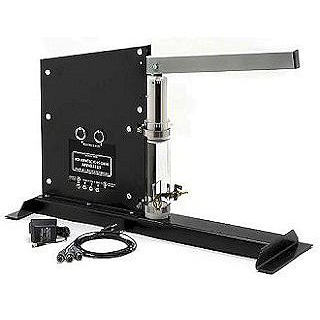Description
Adiabatic and isothermal processes are difficult for beginning physics students to understand. PASCO’s Adiabatic Gas Law apparatus provides the ideal demonstration.
Special Features
- Volume Transducer: A linear potential divider is mounted on the side of the piston. A 5-Volt source from the computer is applied across the potentiometer element. The voltage from the commutator brush on the cylinder is used to indicate the position of the piston and the volume of the confined gas.
- Pressure Sensor: A solid-state, piezoresistive device that forms part of a bridge circuit is mounted at the base of the cylinder.
- Temperature Sensor: Mounted in the cylinder on the top of the base. The active element is fine nickel wire with a high surface-to-mass ratio. The wire’s temperature changes rapidly as the gas compresses or expands.
Includes
- Adiabatic Gas Law Apparatus
- Instruction manual, experiment guide and the fully documented experiment, “Measurement of Work to Compress Gases Adiabatically” (sample data included).
- Signal Cables 3.5 mm plug to 5-pin DIN
- Power Adapter 9V DC @ 1A
A Versatile Lab Tool
- Compare the final pressure and temperature: values predicted by the Adiabatic Gas Law.
- Measure the work done on the gas: compare it to the change in internal energy and the theoretical work performed.
- Determine gamma: the ratio of specific heats for the gas (Cp/Cv).
- Use monatomic, diatomic and polyatomic gases: determine the effects of molecular structure on gamma.
- Investigate isothermal compression and expansion.
Experiments
PASCO’s Adiabatic Gas Law can be used with an 850 Universal Interface or a previous generation ScienceWorkshop Interface such as the 500 or 750. The computer functions as a 3-channel storage oscilloscope, plotting graphs of pressure, temperature and volume as well as integrating the area under a pressure versus volume curve to determine the work done on the gas.

